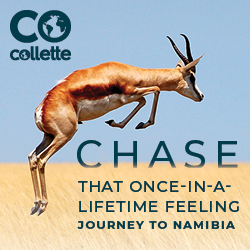On Tuesdays, Ashley Olive sits down at her desk and plans how to inspire and engage potential alumni travelers.
“We do a ‘Travel Tuesday’ post to spotlight an upcoming trip,” said Olive, alumni events and tour coordinator for the University of Alabama National Alumni Association. “Occasionally, we also post live from a trip in progress or when a particular destination is in the news.”
A little over 19,000 people follow the University of Alabama’s alumni association on Facebook, and more than 5,500 follow it on Twitter. Since the posts target all alumni members, whether they travel or not, only a portion of the posts focus on the travel aspect. The posts that showcase a travel program often feature gorgeous travel photos so tempting that they make you want to hop right into the photo, Mary Poppins style.
Olive doesn’t post these photos as a way to increase sign-ups for the latest trip, however. She, like other savvy affinity-group travel planners, uses social media as a way to interact and inform her member base about the extraordinary opportunities available through the organization’s travel program.
Pick a Platform
When first wading into the ever-changing world of social media, it can feel overwhelming trying to choose platforms on which to focus. Most travel planners stick to Facebook, Twitter and Instagram because of their popularity.
Since photos can run on all three sites, a common way to post travel information is to link the platforms so that what you post on one site also shows up on the others automatically.
“We use Facebook, Instagram and Twitter,” said Olive. “My preference is to use Instagram as the main platform and link it to Twitter and Facebook, because photos are really the most alluring part of travel.”
Some loyalty travel programs, such as Century Bank and Trust’s Celebrations Travel Club, focus exclusively on Facebook. Program director Nancy Buchanan oversees the club’s posts, which have regularly chronicled the adventures of the group since 2013.
Facebook continues to appeal to the highest number of people and greatest variety of ages, so most travel planners start there. Planners can create either a Fan Page or a Facebook Group for their travel program. Facebook Groups help customize the experience, since you can choose to make the group private or not, and can add group members by email. Both options allow you to create events specifically for your group members.
Why You Post
The first thing to understand about social media is the following: You can’t look at your Facebook followers as a quick way to fill a trip. This outlook will only prove frustrating. Social media users feel instantly suspicious about anyone trying to sell them something when they are on a site to connect with others.
Instead, use social media mainly to build buzz and cement relationships. Staying engaged with members is a primary objective for many affinity travel programs, so social media should be an extension of this goal.
“Social media is not really a great marketing tool, but more of an awareness platform,” said Olive. “It gives you the chance to tell your story to a broad audience. If you’re thinking ‘Let’s promote this trip on social media to get more travelers,’ then you’re doing it wrong. However, ‘Let’s show everyone in our affinity group in this incredible shared experience’ is definitely a way to show off a different facet of your organization.”
As with many loyalty travel groups, most of Olive’s travelers are older and not very active on social media. The users on her alumni social media sites tend to skew younger. However, she finds that the younger alumni travelers who may not be able to afford a trip yet can glimpse what travel adventures they may one day take through social media. This might encourage them to stay active in the alumni group knowing what fun the future can hold.
With more baby boomers active on social media, the number of potential travelers continues to grow on social media platforms. This is the age group with which you can most effectively build relationships using travel-focused social media postings.
Posting a photo of a recent trip and tagging your baby boomer members reminds them of the trip after the fact. It brings back joyful memories created on the tour to further strengthen their loyalty to the program.
Though you may not notice a direct correlation between a post and bookings, social media helps you stay relevant and top of mind.
What to Post
Once you understand the purpose of social media, use that to inform your tone and what types of content you post.
For example, Buchanan posts a mix of content, not just promoting new trips, but also sharing moments with the group. She will post photos of the group enjoying brunch together, images of past trips and traveling tips she thinks might interest her members.
Many loyalty groups use travel only as a piece of their larger program. The University of Alabama’s alumni Facebook page reflects this, with only 15 percent of posts relating directly to travel. Other posts feature alumni news, homecoming updates, articles highlighting the university and other similar topics.
Test a variety of types of posts on your followers to determine which encourage followers to share, comment or like.
But never stick too closely to a set formula. Social media changes with the wind, so staying up to date on what’s in and what’s out will help keep your loyalty travel program relevant.









